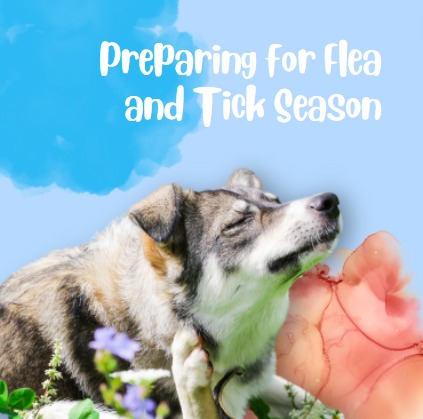Bottom Line
Most dog and cat owners will face fleas at some point during their pet’s lifetime, and while treating these pesky parasites on your pet is fairly simple, it can be tricky to completely eradicate them from your home. Ticks and fleas flourish and grow in hot and humid conditions, and that is the time to be extra vigilant. If left untreated, dogs can hurt themselves with all the scratching, which leaves them open to infections and other issues. Noticed one of these bugs on your dog? Here’s everything you need to know about the most common external parasites in the world — and, most importantly, how to get rid of them.
Tell Me More
Fleas and ticks are a dark coloured critters and about the size of the head of a pin. They dislike light, so your best chance of spotting fleas on a dog is to look within furry areas and on the belly and inner thighs. They may be hard to see on dogs that have longer and/or darker coats, grooming your dog regularly will make the search easier.
Fleas or Ticks: Similarities
- Fleas and ticks both transmit diseases and health issues. Fleas carry tapeworms, while ticks carry Lyme disease and Rocky Mountain spotted fever.
- These insects feed on blood, and in this case, both animals and people are affected.
- Both cause an irritating bite, with a red mark left behind.
- Pets are affected by these pests and can cause serious health issues for animals if left untreated.
- Often, especially for pets, the same products can be used to control fleas and ticks. Pets who spend time outdoors should always be treated for these insects, especially during warmer months.
Fleas or Ticks: Differences
- Ticks are more difficult to identify on their own, but are generally larger than in fleas. Fleas usually appear as small dark specks on fur and clothing, details in fleas are often only visible under a microscope, while ticks are flat, teardrop-shaped, and dark in colour.
- Fleas often become an issue because infested pets come inside, where fleas then hide and reproduce in your home, causing an indoor infestation. Fleas will continue to feed on your animal and can even feed on you, while ticks generally don’t cause indoor infestations. Any pet that spends a lot of time outdoors can pick up the occasional tick, just like when people do. Ticks wait for hosts to brush past the foliage they are on, and they then latch on to their host.
What You Can Do
1. Flea and Tick Medications. The most common and famous is the spot-on topical treatments that you get from the vet and apply to your dog’s back for monthly relief.
2. Apple Cider Vinegar is used as a preventative flea treatment in several cases. It doesn’t kill fleas directly but makes them repel your pet. You can use it by diluting the vinegar and applying it on the regions more prone to insects.
3. Neem Oil has various uses and medicinal properties and can give plenty of health benefits along with flea prevention. Neem Oil can directly be applied to the targeted areas, or you can pour some neem oil into the water and bathe your dog with it once a month. You can do a pet shop online for neem oil.
4. Flea Collars are effective in preventing fleas, treat an existing infestation, or both. They can be either be medicated or emit a gas to ward off insects. They are useful for up to eight months and are a cheaper option than topical medications.
5. Fleas Shampoos that contain medicated or natural ingredients will generally kill ticks on contact. This can be an inexpensive (though labor-intensive) method of protecting your dog during the peak tick season.











